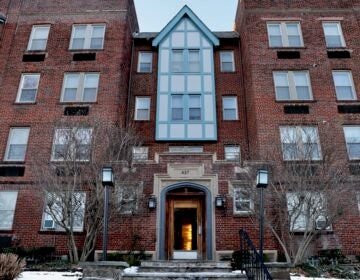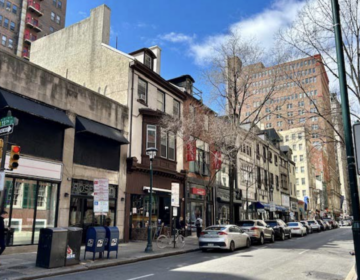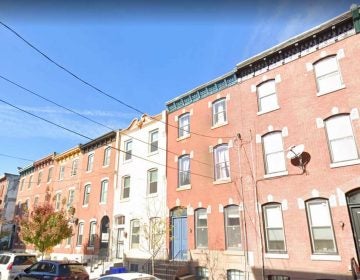St. Laurentius: Score one for the Underdogs
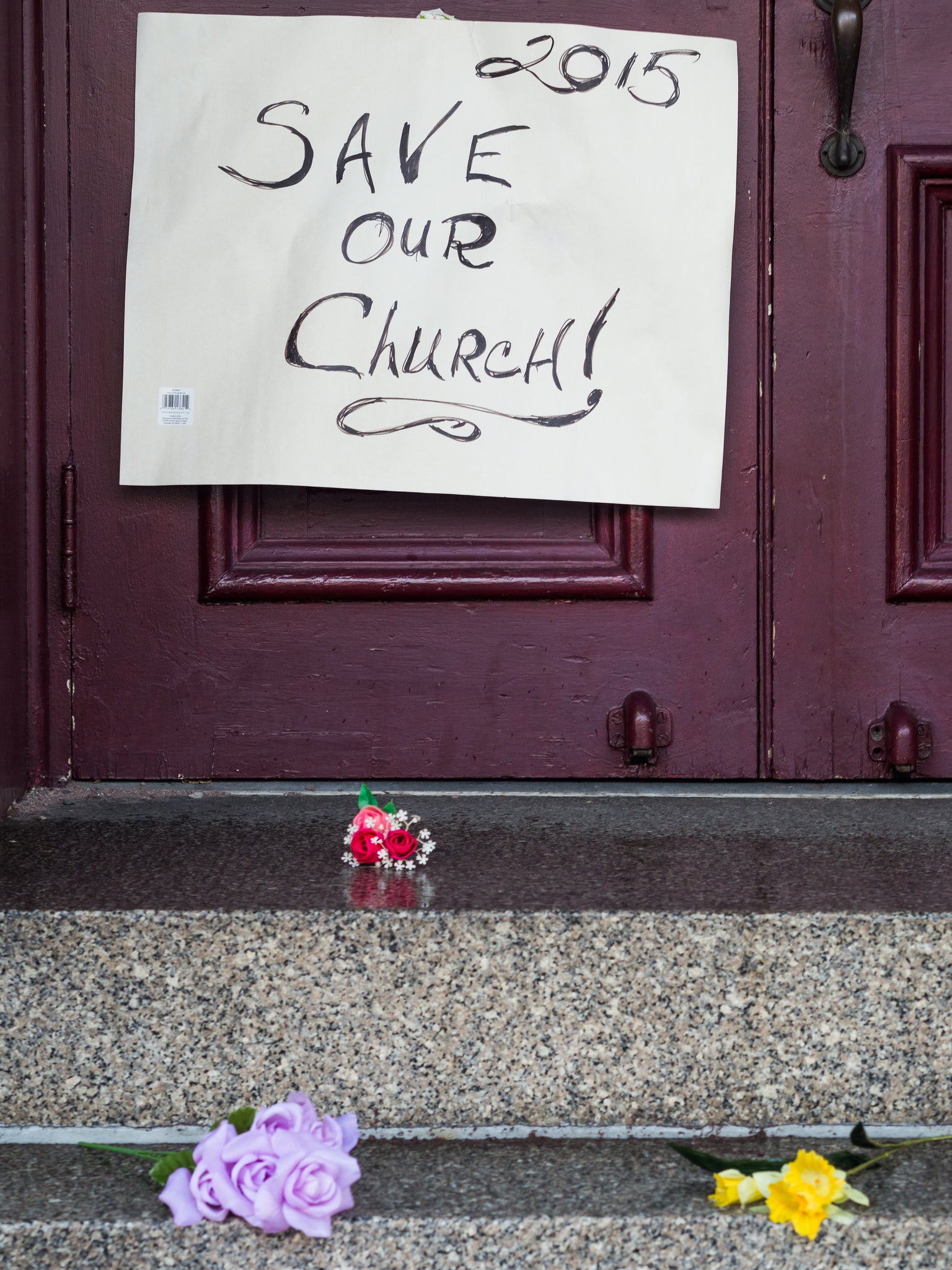
In this Community Contributor piece longtime PlanPhilly advisor and Fishtown native Michael Greenle reflects on the recent designation of St. Laurentius Church as historic, and what this underdog’s victory means.
Growing up in Fishtown, I was aware that outsiders thought it was coarse, perhaps even dangerous, but I was also cognizant that Fishtowners were equally certain of its worth. At the time the future for Fishtown, and other old working-class neighborhoods like it, was stark. But the more it seemed the neighborhood’s unbroken fabric of homes, factories, and churches would not survive intact, the more it seemed Fishtown residents dug-in, defiantly saying, ‘we’ll see’. I grew up seeing Fishtown as the ever-defiant underdog, ignoring the then-present reality with hopes of determining its own future. That’s still how I see Fishtown, and I’m fairly certain other natives do as well.
It’s Fishtown’s tight-knit urban authenticity that has helped the neighborhood become an increasingly desirable place to live. But that very character is what’s also putting development pressure on the neighborhood’s relatively few large, challenging-to-reuse-large buildings, cleared too often with cookie-cutter, forgettable development. As someone who has worked in urban planning, I believe neighborhood change is inevitable and can be healthy. But the best aspects of a neighborhood, the timeless elements that symbolize its unique character, must be preserved lest it slip into suburban sameness.
As you likely know from wide–ranging coverage, this tension has surfaced at the corner of Berks and Memphis streets, where St. Laurentius, pleasingly out-of-scale with its two story neighbors, sits vacant and waiting for a second act worthy of its handsome facade.
The church represents an important moment in our city’s history when immigrant communities decided to make themselves visible and convey stability by creating serious works of architecture that expressed their ethnic heritage and religious identity. In this city of neighborhoods, churches tell an important story of communities striving to announce that they’d ‘made it’, and, to this day, St. Laurentius is an expression and embodiment of that first Polish generation’s hopes.
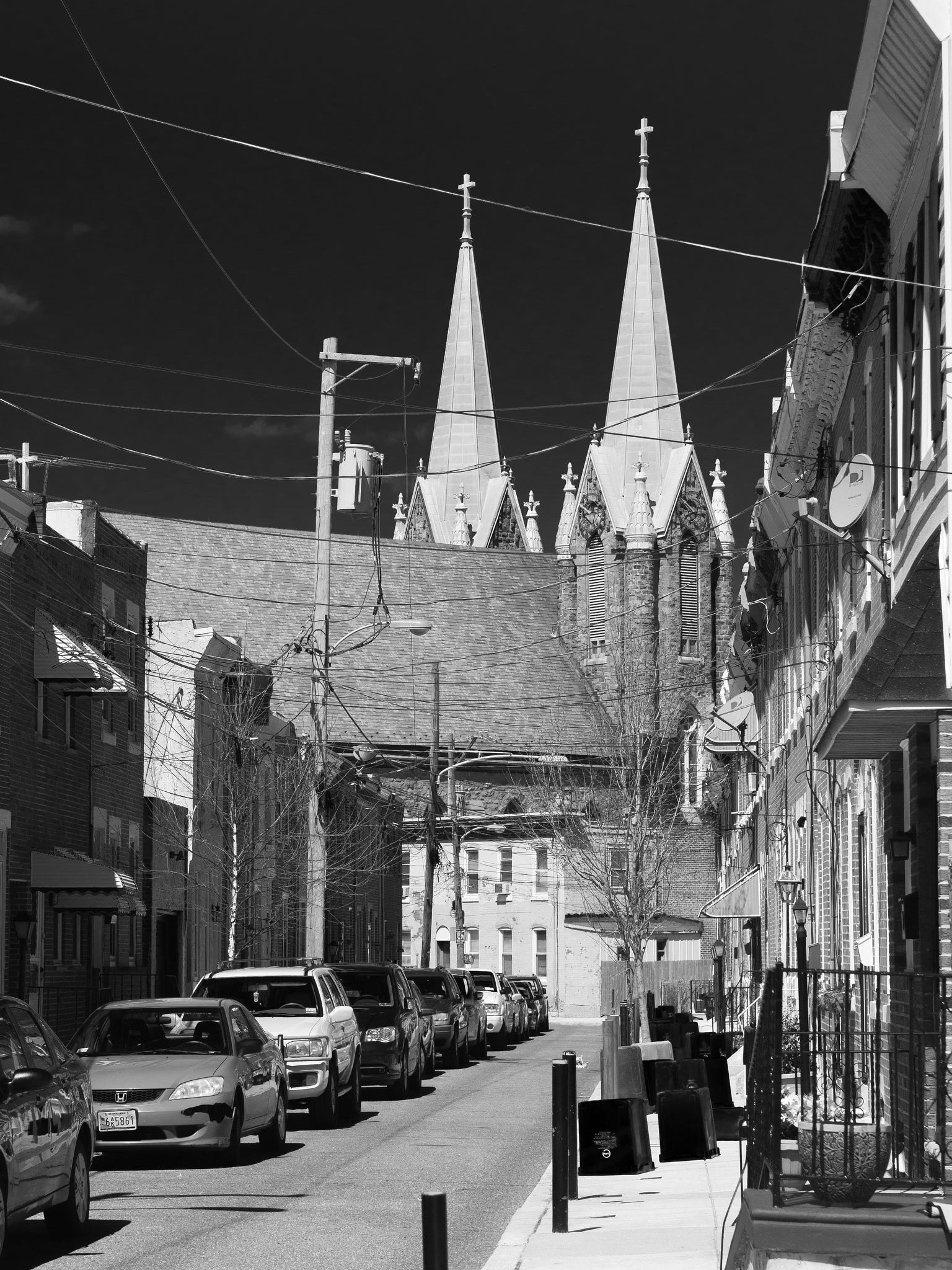
As a student at St. Laurentius School in the 1980’s, I was inspired by its grand architecture, a sign to me that, despite perceptions, my neighborhood had important institutions and was significant. Fishtown seemed to me the underdog neighborhood in an underdog city. At the time Philadelphia was expected to lose its national prominence and slip into obsolescence alongside Detroit. We know it hasn’t turned out that way, and in fact the opposite has happened: St. Laurentius is threatened not because the neighborhood has gone under, but because the neighborhood is desirable. And with the Archdiocese under pressure to consolidate churches and generate revenue, St. Laurentius is prime target. When I learned it was threatened with demolition, I was very proud to see a coalition of former parishioners, Polish heritage advocates, neighborhood activists (including new residents), and preservationists come together to resist the swift move to demolition.
This month’s Historical Commission’s hearing was a charged event with neighborhood preservation advocates facing the Archdiocese’s team – an engineer, an architect, a real estate agent, an attorney and priest – assembled to tell the Commission that the church should not be designated historic. For anyone raised Catholic, this pile of authority figures would be daunting opposition, but I was very sure that the building met the city’s criteria for protection, and the church’s advocates made an excellent case.
A particularly poignant moment for me came when Oscar Beisert, the historian and preservationist who wrote the nomination, rose to make his final remarks before the vote, noting that he thinks of his role as being a friend to friendless buildings, fighting for architectural underdogs. As a gay man who grew up in a working class home in Fishtown, I hold compounded layers of underdog-dom in my bones, and Beisert’s words resonated with me deeply. When I saw that Beisert’s sentimental statement drew snickers from two of the Archdiocese’s experts, presumably because such an earnest sentiment was laughable to folks who make a career in poking holes in old buildings, I boiled.
But Beisert continued by expressing gratitude for the extraordinary scene before him, observing with pleasure that unlike other buildings he’s worked to save, this church has friends, a milieu comprised of new and old Philadelphia, all fighting for what should be obvious: This special building in this special city deserves to live on and be part of the great future this city has before it. In a city that’s trying to figure out how to encourage development without displacing longtime residents, shouldn’t that include protecting landmarks like this to create anchors that bridge past and future generations?
As the meeting ended with the Committee conferring historic status on the church, I was thrilled with the outcome, but also left wishing that the Historical Commission saw greater urgency in identifying those friendless but worthy buildings. No one else will, and we as a city will be lesser for it. In this city full of neighborhoods trying to hold on to their identities, we must overcome the naysayers who see preservation as a half-empty, bottom line issue. We must demonstrate ways our older buildings add real value to the city while encouraging residents to see meaning in their neighborhoods, creating a virtuous circle of stewardship.
The Archdiocese has plans for parish closures and consolidations that will ripple across most neighborhoods in Philadelphia, putting many significant buildings in limbo. The nakedly transactional way that St. Laurentius was treated should give the city pause. My hope is that the designation of St. Laurentius leads the Archdiocese to abandon its opportunistic deal-making for its vast holdings and developing a comprehensive plan to selectively preserve, reuse and strategically dispense of buildings based off of their significance to their communities. A transparent process inclusive of affected communities will provide a path for the Archdiocese to restore its image locally by working collaboratively to honor the incredible investments parishes made to better their communities.
Maintaining and reusing religious buildings may be less profitable than other types of development, but their contribution to communities lies in more than revenue: they send a signal to residents that their neighborhoods have context and meaning. For St. Laurentius, the question now turns to how to preserve and protect the building through a likely sale and ensure it continues to serve the Fishtown community in coming decades. Luckily there are cases of churches being reused and restored across Philadelphia, including at least two currently underway.
I’m glad to note that, with the first Polish Catholic church in the city joining the pantheon that includes some of our nation’s most significant structures, it confers a status that its founding Poles (the ultimate underdogs, having no country to speak of at the time) would never have imagined. It was a moment to remember that buildings like these, borne from hopes of people long gone, are what make Philadelphia the beautiful place it is. That we as a city are diminished without these places is at the heart of the Historical Commission’s charge. It was thrilling to see the Commission, itself over sixty years old, honor this obligation, and gave me hope for other significant buildings, even the friendless ones.
—————————————
Have bright ideas or insights to share from your corner of the city? You too can be a Community Contributor. Drop us a line at EOTS@planphilly.com with your ideas for commentary.
WHYY is your source for fact-based, in-depth journalism and information. As a nonprofit organization, we rely on financial support from readers like you. Please give today.





